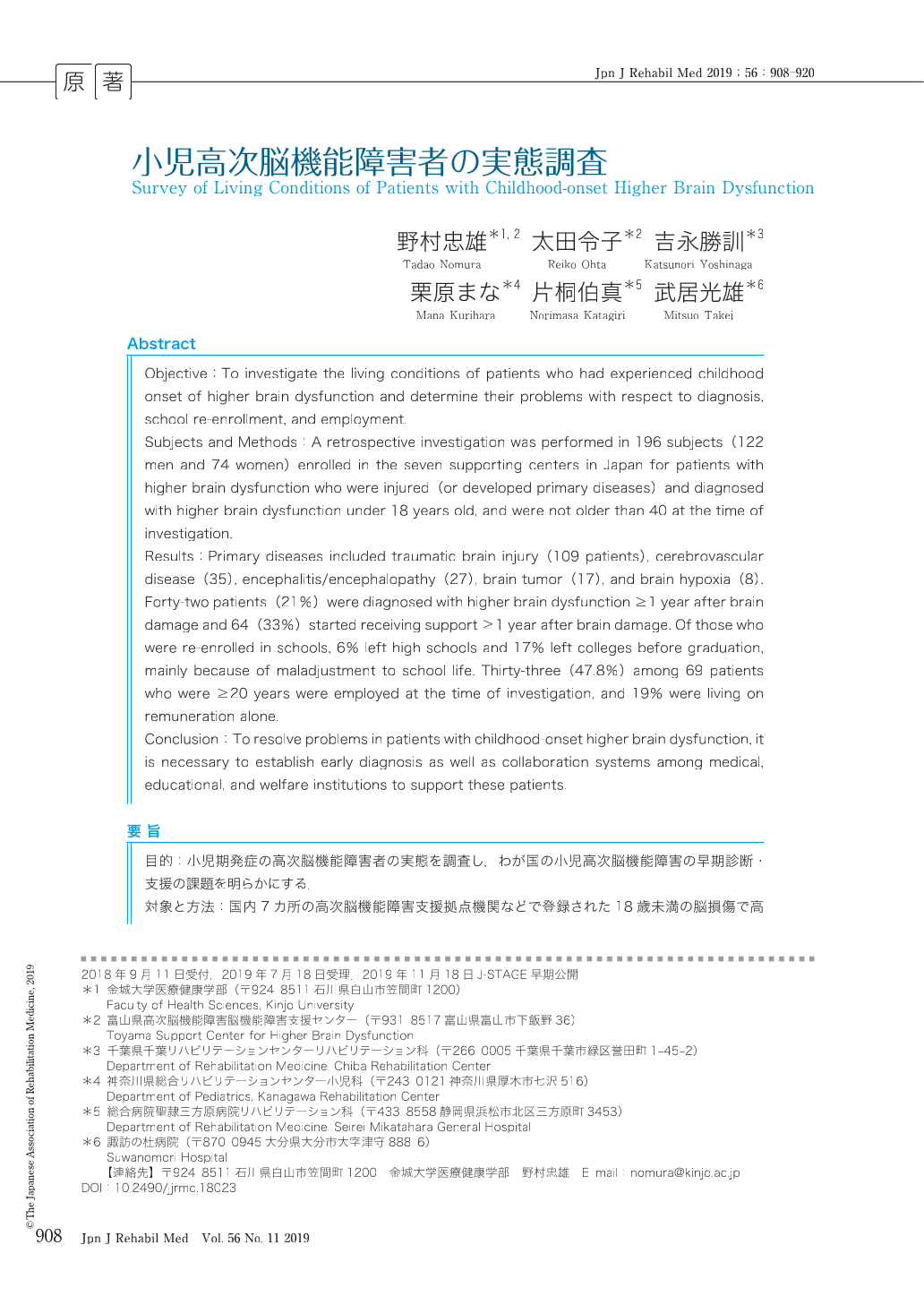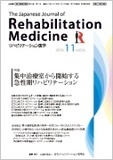Japanese
English
- 販売していません
- Abstract 文献概要
- 1ページ目 Look Inside
- 参考文献 Reference
要旨
目的:小児期発症の高次脳機能障害者の実態を調査し,わが国の小児高次脳機能障害の早期診断・支援の課題を明らかにする.
対象と方法:国内7カ所の高次脳機能障害支援拠点機関などで登録された18歳未満の脳損傷で高次脳機能障害の診断を受け,調査時40歳未満の196名(男122名,女74名)に対して後方視的調査を行った.
結果:高次脳機能障害の原因疾患は外傷性脳損傷109名,脳血管障害35名,脳炎・脳症27名,脳腫瘍17名,低酸素脳症8名であった.脳損傷から高次脳機能障害診断までに1年以上を要したものが42名(21.4%),支援までに1年以上のものは64名(32.7%)であった.高校での中途退学率は6.2%,大学などでは16.7%で,中途退学の理由では,学生生活不適応が多かった.調査時20歳以上の69名のうち就労していたものは33名(47.8%)で,就労報酬のみで生活していたものは18.8%であった.
結論:小児期発症の高次脳機能障害者の課題解決には,早期診断と医療・教育・福祉の関係機関の連携,支援体制の確立が必要である.
Objective:To investigate the living conditions of patients who had experienced childhood onset of higher brain dysfunction and determine their problems with respect to diagnosis, school re-enrollment, and employment.
Subjects and Methods:A retrospective investigation was performed in 196 subjects (122 men and 74 women) enrolled in the seven supporting centers in Japan for patients with higher brain dysfunction who were injured (or developed primary diseases) and diagnosed with higher brain dysfunction under 18 years old, and were not older than 40 at the time of investigation.
Results:Primary diseases included traumatic brain injury (109 patients), cerebrovascular disease (35), encephalitis/encephalopathy (27), brain tumor (17), and brain hypoxia (8). Forty-two patients (21%) were diagnosed with higher brain dysfunction ≥ 1 year after brain damage and 64 (33%) started receiving support ≥ 1 year after brain damage. Of those who were re-enrolled in schools, 6% left high schools and 17% left colleges before graduation, mainly because of maladjustment to school life. Thirty-three (47.8%) among 69 patients who were ≥ 20 years were employed at the time of investigation, and 19% were living on remuneration alone.
Conclusion:To resolve problems in patients with childhood-onset higher brain dysfunction, it is necessary to establish early diagnosis as well as collaboration systems among medical, educational, and welfare institutions to support these patients.

Copyright © 2019, The Japanese Association of Rehabilitation Medicine. All rights reserved.


